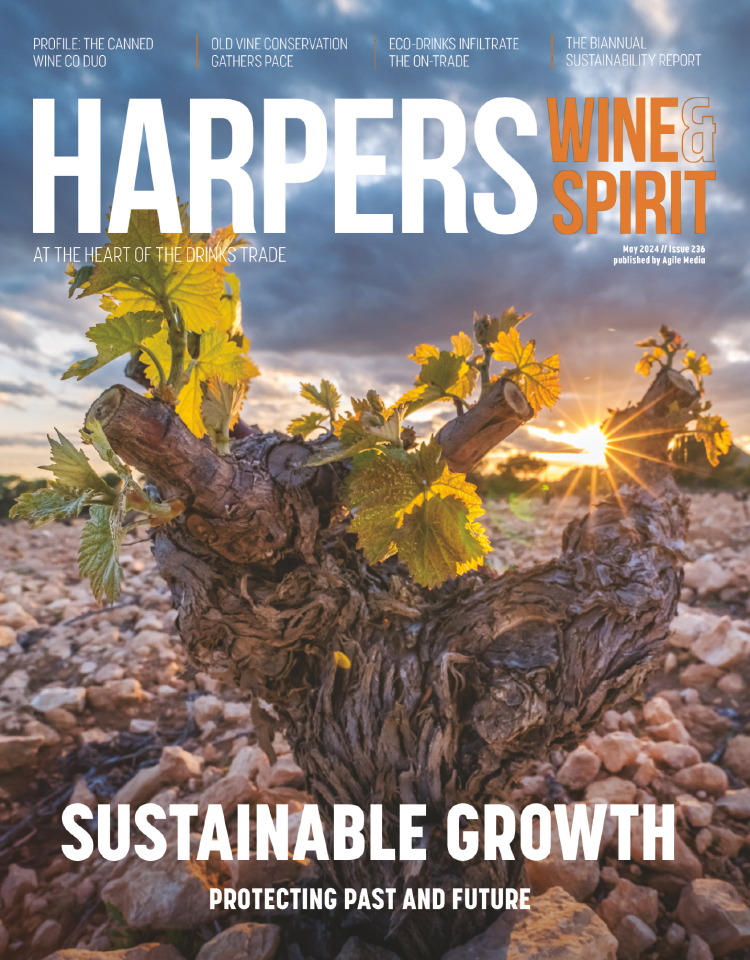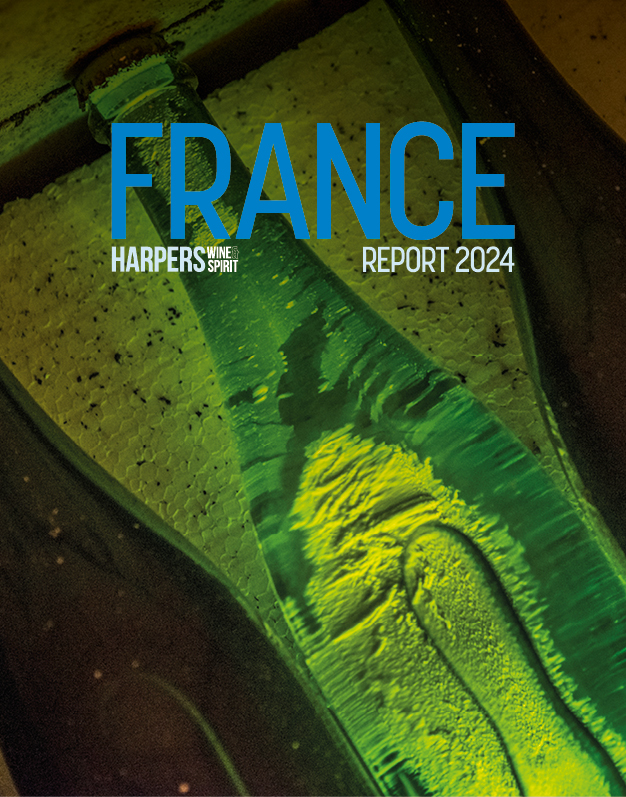
Looking ahead to the Xmas run up: Richard Cochrane, MD, Felix Solis UK
With the autumn tasting season soon upon us, as the trade prepares for the run up to the all-important Christmas trading period, Harpers is running a web series asking leading voices in the trade what trends and challenges they’re expecting to face in the latter half of 2017.
We continue our series with Richard Cochrane, managing director, Felix Solis UK:
How has the first half of 2017 been compared to the same period in 2016?
Felix Solis had a reasonable first half in 2017, with sales growing ahead of last year against a challenging back drop of declining market volume and value. Despite strong premium Spanish wine sales, the overall Spanish segment has been difficult. For us, strong NPD has underpinned our growth strategy along with reliable brand performance. As people choose more carefully where and how they spend, they look for reassurance and engaging quality, which we have focused hard on.
What, currently, are the biggest challenges for the trade?
Our industry, like many others, has seen great progress as consumers in this market, and further afield, turn to a hugely exciting world of wine. It is a serious concern though to see the current global political trajectory towards increased protectionism, intolerance, posturing and aggression and the finger hovering over the nuclear button akin to the Cuban crisis. Wine in many ways is a compelling vehicle to help challenge these backwards steps. We saw the first phase of Brexit play out in 2016 with an industry tax driven by the collapse of sterling. 2017 sees the consumer face into the same challenges as prices inflate and wage growth slows squeezing spend on all products including wine. Add to this challenging vintage conditions post spring frosts and a hot dry summer in Europe and equal difficulties in many parts of the New World. This will unquestionably lead to the likelihood of further wine inflation and that’s before the final stages of Brexit playout, regardless of any transitional reprieve. These are global political and vinous challenges that require new ways of engaging consumers.
Taking current trading conditions into account, what’s your strategy for meeting those challenges during the second half of the year, through autumn and leading up to the crucial Christmas trading period?
The brands and innovation that drove our first half growth look likely to continue to build in the run up to Christmas. Driving quality and engagement remain core to our strategy. NPD collaboration with willing partners is instrumental to taking this further, with several promising developments taking shape quickly.
And where do the opportunities lie?
Sparkling wine has been the most successful segment in the wine category for over a decade. Supply tension in Northern Italy is pushing price and with a maturing of the sparkling market in the UK, sale growth is now starting to stagnate. Innovating to re-energise this segment is important if we are to avoid sparkling wine becoming a little flat this Christmas. We are launching Vina Albali Brut and Rosado this autumn in Amazon, which joins our growing Prospero sales in Morrisons and now in 20cl in Tesco, along with Provetto in Conviviality’s Bargain Booze amongst others. Private label sparkling is an area of increasing importance too.
We have also been very encouraged by our de-alcoholised sales using smart spinning cone technologies to retain fruit and flavour at under 0.5% ABV. As consumers think more about a healthy balanced lifestyle, not drink driving or consuming alcohol during pregnancy, they are buying into this segment in a major way. Fitting in socially with friends already enjoying wine with a de-alcoholised version appears to be a growing trend.
In Spain we have also seen a strong premium performance, especially for delicious crisp whites such as Pulpo Albariño from Rias Biaxas, Arnegui white Rioja, Pulpito Rueda Verdejo and Viña Albali Rueda Sauvignon Blanc. This trend is helping to balance the traditional success of smart Spanish reds.
Within the fruit fusion segment Sangria has risen to the top as people re-discover this gem. Our Sangria sales have grown by 21% this year, especially for our brand leader Peñasol in Tetra Pak format. Imagine what could happen if the sun actually came out during the British summer for Sangria.
Specifically, what will the focus be on with regard to your portfolio?
We will continue to explore sparkling, de-alcoholised and premium Spain through our key brands like Viña Albali and new engaging brands like Pulpito. In addition, we are diversifying into Chile which has become an important area for growth in our business as we invest in Chile with new technologies.
Any trends that you anticipate?
Wine is about enjoyment for consumers and as shoppers switch to spending more on experiences than things, wine has the potential to continue to fully engage the market. But there is stiff competition on how people spend to enjoy themselves, especially as the financial challenge builds. Switching to craft beer for those interested in the product quality and the story or those choosing spirit mixers as the average price of wine moves out of their reach or worryingly the trend towards legal highs, are all taking consumers away from wine. Minimum pricing and further clumsy duty hikes are likely to lead to some serious unintended consequences both for HM Treasury income, Department of Health and consumers. This might well also lead to a much smaller wine industry with more limited wine list or shelf space to compete for. So smaller volume, better quality…. but with potentially less choice.
Wine is currently highly reliant on the 75cl format, yet this is not always the perfect size. Two people sharing a bottle are better served by a 50cl format and of course the growth in single serve confirms the need to explore formats further. Indeed, the US success with magnums and Scandinavia’s with bag-in-box, all point to the diverse routes that can become the majority format with the right products and focus. The UK’s headwinds of inflation and health both support the slightly smaller 50cl format to ensure shoppers can remain part of the future category and not be forced to find solace elsewhere.
Which channels are likely to perform best and which be under the greatest stress and why?
No channel is immune from the current stress faced by the market, but each has exciting and unique tools with which to make headway.
A quarter of our sales are through the On Trade, which is our fastest growing channel. The casual dining venues, often with their focused tight wine range, bring food and wine together in a relaxed and enjoyable setting which lends itself more naturally to strong customer engagement. For younger consumers burdened by the legacy of student debt, without car or house ownership, or indeed interest in adding to their debt, the casual dining scene is going to retain spend.
Retailers will see success from fewer meals out from those choosing to “dine in” when feeling the pinch. An equivalent spend on a bottle of house wine in a retailer provides a major trade up opportunity to enjoy at home. 50cl can play a key role here providing better wine for two people to share for less discretionary spend.
How optimistic are you – will business for the drinks trade be better or worse between now and 1 January 2018 compared with last year and why?
Trading conditions are tougher now than a year ago, which seems almost impossible to imagine. It’s a familiar refrain each year but the market is also challenging this situation with greater innovation and possibilities. As we face the economic Dunkirk of Brexit, the small boats of our industry are starting to arrive in their numbers. We need to be bold or face a bleak future.
Keywords:
- wine
- Spain
- Christmas
- Brexit
- LOOKING AHEAD
- Felix solis
- trading
- Richard Cochrane
- wine format
- lower alcohol






